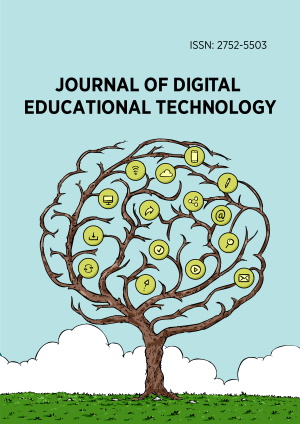Research Article
Development of Thematic E-Comic Based on Augmented Reality
More Detail
1 Department of Mathemathic Education, University of Jember, East Jawa, INDONESIA2 Department of Biology Education, University of Jember, East Jawa, INDONESIA* Corresponding Author
Journal of Digital Educational Technology, 2(2), August 2022, ep2205, https://doi.org/10.30935/jdet/12359
Submitted: 01 May 2022, Published: 15 August 2022
OPEN ACCESS 1897 Views 1462 Downloads
ABSTRACT
Considerable changes in the world of education are required due to the COVID-19 pandemic. The commonly implemented offline learning class can no longer be done. Alternatively, online learning becomes the only option to be implemented. This consequently affects the students’ ability in understanding the learning material presented by the teachers. Therefore, teachers are expected to develop varied interesting learning media to help students understand the learning material better. This research aims at describing the design of e-comic based on augmented reality and determining its validity on flat-plane learning material. This developmental research uses ADDIE development model with five stages, namely analyze, design, develop, implement, and evaluate. The results of the validation assessment from the content expert, learning design expert, and the learning media expert obtained 95%, 92%, and 98%, respectively with very good categories. The overall validation results from the experts and individual trials were categorized as very good.
CITATION (APA)
Prihandini, R. M., & Siswati, B. H. (2022). Development of Thematic E-Comic Based on Augmented Reality. Journal of Digital Educational Technology, 2(2), ep2205. https://doi.org/10.30935/jdet/12359
REFERENCES
- Audie, N. (2019). The role of learning media to improve student learning outcomes. In Proceedings of the National Seminar on Education FKIP Sultan Ageng Tirtayasa University (pp. 586-595).
- Branch, R. M. (2009). Instructional design: The ADDIE approach. Springer Science & Business Media. https://doi.org/10.1007/978-0-387-09506-6
- Coal, H. H. (2015). Development of interactive learning media on integer operations. Muallimuna: Journal of Madrasah Ibtidaiyah, 1(1), 1-12. https://doi.org/10.31602/muallimuna.v1i1.271
- Indriasih, A., Sumaji, S., Badjuri, B., & Santoso, S. (2020). Development of e-comic as a learning media to improve life skills for early childhood. Educational Reflections: Scientific Journal of Education, 10(2), 154-162. https://doi.org/10.24176/re.v10i2.4228
- Kaufmann, H. (2003). Collaborative augmented reality in education. Institute of Software Technology and Interactive Systems, Vienna University of Technology. https://www.ims.tuwien.ac.at/publications/tuw-137414.pdf
- Laksmi, N. L. P. A., & Suniasih, N. W. (2002). Development of e-comic learning media based on problem based learning on water cycle materials in science content for class V elementary school. Scientific Journal of Education and Learning, 5, 1.
- Nurrita, T. (2018). Development of learning media to improve student learning outcomes. Misykat, 3(1), 171-187. https://doi.org/10.33511/misykat.v3n1.171
- Piaget, J. (1936). Origins of intelligence in the child. Routledge & Kegan Paul.
- Piaget, J. (1945). Play, dreams and imitation in childhood. Heinemann.
- Sutrisman, A. (2014). Perbedaan tingkat pengetahuan, sikap dan tindakan dalam pemeliharaan kebersihan gigi dan Mulut (PHPM) sebelum dan sesudah penyuluhan kesehatan gigi [Differences in knowledge levels, attitudes and actions in maintaining dental and oral hygiene (PHPM) before and after dental health counseling]. Jurnal Valid, 11(2), 8-17.
- Tegeh, I. M. (2018). Development of comic strip media with ADDIE model in science subjects to increase learning motivation of class V students at SD Negeri 1 Sari Mekar. Undiksha Edutech Journal, 6(2), 245-255.
- Utami, R. P. (2021). The importance of learning media development in teaching and learning process activities. Dharma Pendidikan [Education Dharma], 12(2), 62-81.

 The articles published in this journal are licensed under the CC-BY Creative Commons Attribution International License.
The articles published in this journal are licensed under the CC-BY Creative Commons Attribution International License.